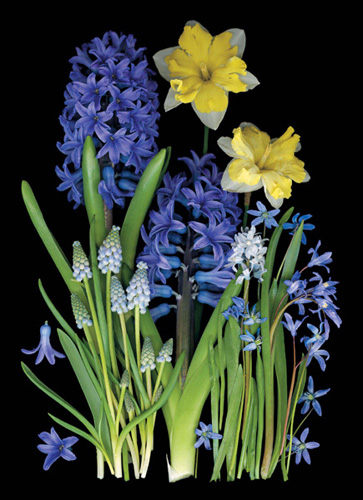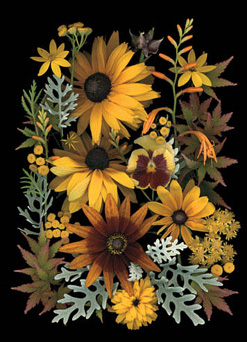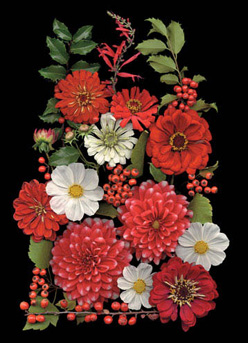
An accent color makes a monochromatic scheme pop, or any arrangement for that matter. Cover the yellow daffodils in the image with your hand, then uncover it. The deep blue hyacinths, pale grape hyacinths, near-white striped squill (Puschkinia scilloides) and starry blue glory-of-the-snow (Chinodoxa sardensis) become more distinguished when yellow is included.

The monochromatic and analogous displays are bound to be successful, but in some cases, they may still seem incomplete. The monochromatic color scheme might appear too homogeneous for some situations. A combo of analogous reds might look too saturated, or overly active and bright. You may need to add an accent.
Part of the success of an accent color is contrast. White can spark just about any planting. Bright white pops in the garden and attracts attention, especially when it is surrounded by primary colors. The color that lies directly across the wheel from the hue—its complement— is known for contrasts, and will supercharge a planting. An arrangement based on blue and blue-violet flowers may seem withdrawn. An accent is called for. White as an accent could steal the show. Orange is blue’s complement, but it might look garish and brash compared to the refined blues. For more subtlety, when the complementary accent could be a bit shocking, look to secondary or tertiary colors found nearby. Canary yellow always brings out the best in blues. Yellow might be the intonation to differentiate the blue and blue-violet hues, tints, and shades, and make these analogous colors appear more complex and vivid without overpowering them.
In reverse, to accent an orange scheme, silver, being somewhat white and bluish (based on blue’s complement across the wheel), might be just the thing to elevate warm hues in the yellow-orange to red-orange range. Silver provides a sophisticated accent. Metallic foliage goes well with most colors, and looks especially good with vivid, saturated hues and deeper shades.
White and silver go with everything, the latter tending to be a bit more subtle and perfect for a planting of Rudbeckia daisies and their relatives with an orange Crocosmia variety (syn. Monbretia) with silver dusty miller, Senecio cineraria against a background of bronze Japanese maple.

White is always an accommodating accent color. This late summer arrangement of dahlias, zinnias, and holly berries was energized by the addition of white cosmos and one white zinnia that turn hot red to spicy peppermint.
